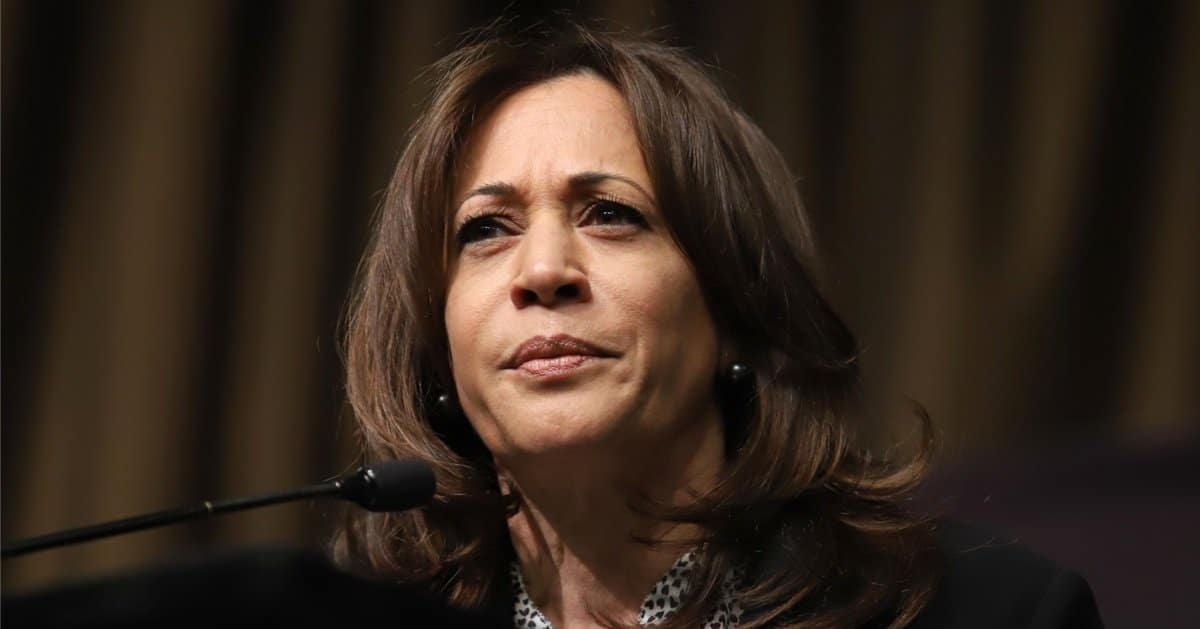


With the 2024 presidential election on the horizon, the political landscape is abuzz with speculation regarding potential shifts in leadership within the Democratic Party with Forbes reporting that Vice President Kamala Harris is in prime position to ascend.
Discussions are intensifying around Harris' potential vice-presidential picks should she ascend to a presidential candidacy.
Amid growing concerns about President Joe Biden's readiness for a reelection campaign due to his age, there is significant chatter about him possibly stepping down.
Experts indicate that Biden himself would have substantial input on his successor, with Vice President Kamala Harris being a prominent candidate to take up the presidential mantle.
As political analysts discuss the upcoming election, Daniel Cassino, a well-known political scientist, has outlined potential strategies for selecting a vice president.
He suggests three main approaches: focusing on candidates from pivotal swing states, choosing a running mate who complements the presidential candidate demographically and ideologically, or selecting someone who amplifies the presidential candidate’s attributes.
Amid these strategies, the balance between demographic representation and regional influence plays a crucial role in the decision-making process.
Cassino's insights shed light on the complexities of this high-stakes selection.
Several names are circulating as possible vice-presidential candidates should Harris vie for the presidency.
Prominent figures such as Elizabeth Warren, Julián Castro, Cory Booker, Pete Buttigieg, Roy Cooper, Mark Kelly, Stacey Abrams, and Josh Shapiro are among those considered. Each candidate brings a unique blend of experience and appeal that could complement Harris's campaign.
However, Cassino notes that while selecting a vice-presidential candidate from a swing state might seem beneficial, there is limited data to support this strategy's effectiveness in securing electoral victories. This insight challenges conventional wisdom about the electoral advantages of geographic considerations.
Recent polls have provided insight into public opinion regarding the potential reshuffle at the top of the Democratic ticket. A SurveyUSA/FairVote poll shows Pete Buttigieg and Michigan Governor Gretchen Whitmer as frontrunners among Democrats and independents in swing states for the vice-presidential slot.
Moreover, the same poll indicates that Kamala Harris is the preferred candidate among likely Democratic and independent voters to succeed Joe Biden. This preference underscores her strong position within the party and her broad appeal to a diverse electorate.
A separate poll by the Associated Press-NORC Center for Public Affairs Research highlights a significant public sentiment regarding Biden's future. Approximately 70% of adults surveyed believe Biden should not pursue reelection, reflecting widespread concerns about his continued suitability for the presidency due to age-related factors.
This sentiment adds another layer of complexity to the Democratic Party's strategic considerations as it approaches the next election cycle, emphasizing the importance of leadership transition plans.
Choosing a vice president involves not just political calculations but also a careful consideration of how the candidates' characteristics might resonate with voters. Cassino suggests that Harris could opt for a running mate who is older and more liberal, such as Elizabeth Warren, to balance the ticket in terms of experience and ideological breadth.
However, there are potential drawbacks to some candidates. For instance, concerns about removing Josh Shapiro from his current role might deter his selection, highlighting the complex interplay of individual career trajectories and broader party goals.
As the Democratic Party navigates these decisions, the implications for the 2024 presidential race are significant. The choice of a vice-presidential candidate could have a profound impact on the party’s strategy and electoral prospects.
This evolving situation requires careful monitoring as developments unfold, shaping the future of the Democratic leadership and the broader American political scene.
In conclusion, the discussions surrounding the potential presidential and vice-presidential candidates for the Democratic Party highlight the strategic considerations that must be balanced to maintain unity and appeal to a diverse voter base. The coming months will likely provide more clarity as the party solidifies its plans for the upcoming presidential race.



